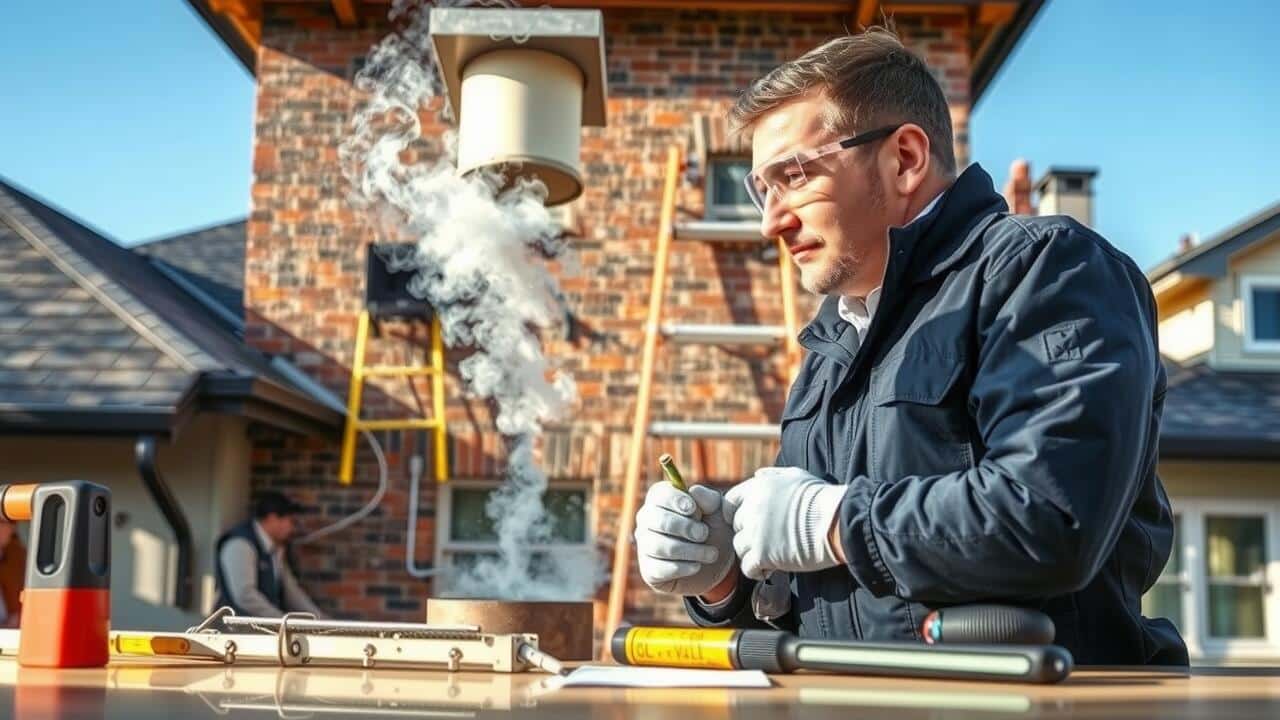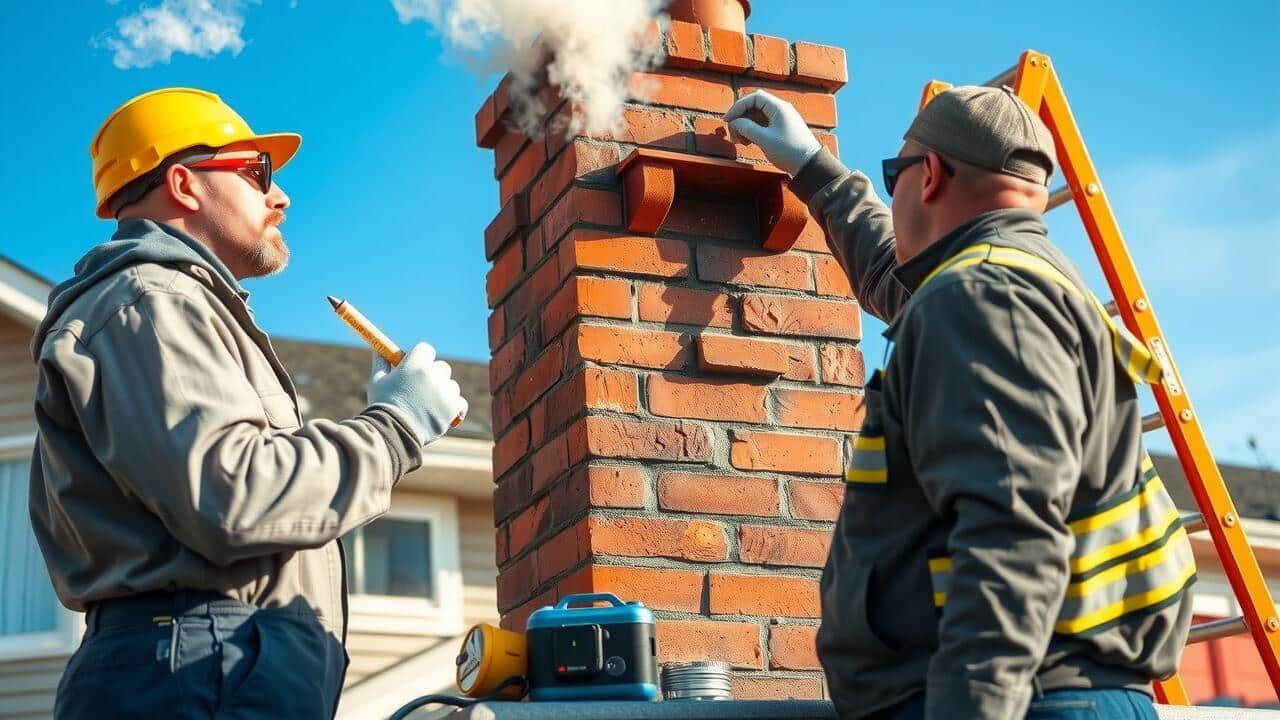Table Of Contents
Check for Draft Issues
Draft issues can serve as a critical sign that a chimney may be leaking smoke. When you notice an unusual draft, it might indicate that smoke is escaping from the flue into your home rather than being properly vented outside. Pay attention to any changes in airflow around the fireplace. A strong draft while the fireplace is in use can mean that the chimney is not functioning correctly.
Chimney Smoke Testing is an essential procedure to diagnose these draft issues. Professionals use this testing method to assess how effectively your chimney is venting smoke. If there are leaks or blockages, the test will help identify them, allowing for timely repairs before more severe problems arise. Regular monitoring of draft conditions can ensure a safer and more efficient fireplace experience.
Fluctuations in Indoor Air Quality
Fluctuations in indoor air quality can be a clear indicator of potential problems with your chimney. When smoke from the fireplace or wood stove enters your living space, it can compromise air quality significantly. Symptoms may include discomfort, increased coughing, or a general feeling of unease. Regular monitoring of indoor air can help detect such issues early on.
Chimney smoke testing is a valuable procedure that evaluates whether smoke is properly venting out of the chimney. This test can identify any blockages, leaks, or deterioration in the chimney structure. By ensuring your chimney is functioning correctly, you can maintain a healthier indoor environment and prevent hazardous air quality situations.
Observing Outdoor Evidence
When assessing outdoor evidence of a potential chimney leak, pay close attention to the area around your chimney for any signs of smoke. If you notice wisps of smoke or a haze lingering near the chimney top, this may indicate that smoke is escaping rather than being properly funneled up and away. Observing the color and density of the smoke can provide additional clues regarding the efficiency of the chimney system. Darker smoke may suggest incomplete combustion or other issues that warrant immediate attention.
Another method to evaluate the chimney’s performance is through Chimney Smoke Testing. This process can reveal if there are breaches along the flue or potential blockages preventing smoke from exiting properly. Conducting this test outdoors during a period of calm weather can help in gauging the actual performance of your chimney. Make sure to observe whether smoke disperses quickly or if it pools and drifts back toward your home. These factors can indicate serious concerns that need to be addressed.
Smoke Escaping from the Chimney
When smoke escapes from your chimney, it can signal a variety of problems that need immediate attention. Look for signs like soot on the exterior of the chimney, or an unusually strong odor within your living spaces. These indicators suggest that smoke is not exiting as it should. Homeowners may also notice an increase in smoke inside during a fire, which can lead to health complications and reduced air quality. Identifying these issues early can prevent costly repairs down the line.
Conducting Chimney Smoke Testing is essential to evaluate the integrity of your chimney system. This testing helps determine whether the smoke is being properly vented outside. Professionals utilize specialized equipment to monitor airflow and identify any blockages or leaks. Regular assessments ensure that your chimney remains safe and functional, protecting both your home and the occupants from harmful smoke exposure.
The Importance of Regular Inspections
Regular inspections of your chimney are crucial for maintaining a safe and functional heating system. Over time, soot and creosote can accumulate, leading to blockages that restrict airflow. These blockages can cause smoke to back up into your home, posing health risks and fire hazards. Scheduling routine assessments enables professionals to catch potential issues early and ensure that your chimney remains in good working condition.
One key element of these inspections is Chimney Smoke Testing, which helps identify leaks and evaluates the efficiency of your chimney’s draft. This testing can reveal hidden problems that may not be visible during a standard inspection. By incorporating Chimney Smoke Testing into your maintenance routine, you can ensure your home is not only comfortable but also safe from the dangers of smoke exposure. Regular checks and proactive measures contribute significantly to the longevity and efficiency of your chimney system.
Scheduling Professional Assessments
Scheduling regular professional assessments for your chimney is vital to maintain its safety and efficiency. Trained professionals can identify issues that might not be apparent to the untrained eye. A comprehensive evaluation can include various tests, with Chimney Smoke Testing being a crucial component. This testing helps detect any leaks or blockages in the system, ensuring that smoke is venting properly and not entering your home.
Having a routine inspection also allows you to address any potential problems before they escalate into more severe issues. Professionals utilize advanced tools and techniques to provide an accurate assessment of your chimney’s condition. Regularly scheduling these evaluations can save you time and money in the long run, allowing you to enjoy a functional fireplace without the worry of smoke leaks and their associated hazards.
FAQS
What are the signs that indicate my chimney may be leaking smoke?
Common signs include a persistent smell of smoke indoors, excessive creosote buildup, or visible smoke escaping from the chimney. You may also notice fluctuations in indoor air quality or drafts in your home.
How can I check for draft issues in my chimney?
To check for draft issues, light a piece of paper and hold it near the fireplace. If the smoke is drawn up into the chimney, the draft is functioning properly. If the smoke billows back into the room, there may be a blockage or leak.
What should I look for when observing outdoor evidence of a leaking chimney?
Look for signs such as smoke visibly escaping from the chimney, an excessively dirty chimney cap, or soot stains on nearby surfaces. These can indicate that your chimney is leaking smoke.
How often should I schedule professional inspections for my chimney?
It is recommended to have your chimney inspected at least once a year, especially before the heating season begins, to ensure it is functioning properly and to identify any potential leaks or issues.
What should I do if I suspect my chimney is leaking smoke?
If you suspect your chimney is leaking smoke, it is best to stop using the fireplace immediately and schedule a professional inspection. A qualified chimney sweep can assess the situation and make necessary repairs.

